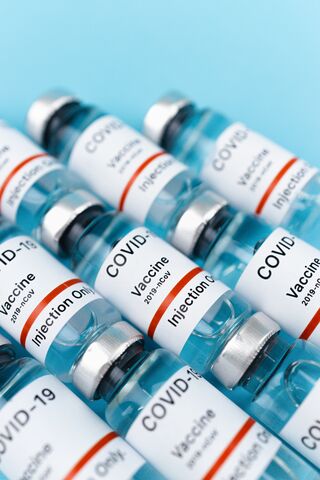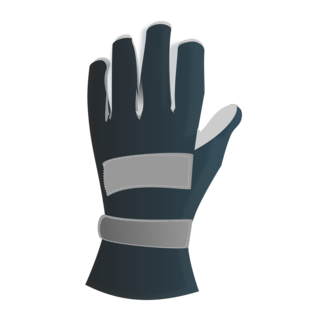Fear
Hypnosis Can Help With Vaccine Hesitancy in Young Children
Fear of needles may be a barrier for administration of the COVID-19 vaccine.
Posted October 30, 2021 Reviewed by Kaja Perina
Key points
- The COVID-19 vaccine is expected to soon be available for children ages 5-11 years.
- Many children under the age of 11 are afraid of needles.
- A topical numbing cream, distraction, virtual reality, a vibrating device or blowing soap bubbles can help children tolerate injections.
- Hypnotic techniques can be used to help with fear of needles through use of words and imagery.
The COVID-19 vaccine may be approved this coming week for use in children ages 5-11 years. On October 29, the FDA issued an emergency use authorization for this age group. The plan is for the vaccines to be administered at pediatricians’ offices, other primary care sites, hospitals, pharmacies, schools, and community health centers.

The majority of children under the age of 11 years are afraid of needles (McLenon & Rogers, 2019), which also is known as trypanophobia when the fear is extreme. Such fears may prevent children from receiving lifesaving medical treatment. In severe cases, children develop dizziness, shakiness, sweating, and nausea because of their anxiety (Jenkins, 2014). Thus, fear of needles may be a barrier for administration of the COVID-19 vaccine in the newly targeted age group.
Use of a topical numbing cream can help children better tolerate injections (Boivin, 2008). Distraction (Berberich & Landman, 2009) and a virtual reality headset (Rudnick, 2018) have also been shown to be helpful. Many children respond to use of Buzzy®, a vibrating device that is applied to the site of the vaccine administration. The pain signal to the brain is altered by the vibration, and therefore the child is less likely to focus on any injection-associated discomfort (Susam, 2018). Deep breathing can help calm the child. A discussion of why a vaccination is beneficial is sufficient to help some children to better tolerate it. The promise of a prize after a vaccine is administered also can help.
The words we use can affect how children react to procedures. For example, who wants to receive a “shot?” During the COVID era we’ve learned that it might be better to receive a “jab.”
Hypnosis to Help with Needle Related Discomfort
Therapy with hypnosis is an effective alternative to help with fear of needles (Kohen & Olness, 2011). Understanding the source of the child’s fear helps best direct the therapy. Is it a fear of pain, fear of a foreign object inside the body, fear of being held down, or fear of blood?
For example, children who have been held down in the past to undergo a medical procedure may be afraid of losing control. Therapy in this case could be focused on helping the children assert control by using hypnosis to calm themselves and letting their medical provider know when they are ready to begin their procedure.

Children can learn to control pain with hypnosis in several ways. A favorite of many kids is learning how to use a “magic glove.” They imagine putting a glove on one of their hands, including thinking of its color, texture, thickness, and warmth. Once the glove is on, the children can be shown that touching or pricking of the gloved hand feels different from that felt by the opposite hand. The sensation achieved with the gloved hand can be numb, ticklish, or as if a feather is touching the hand. The sensation of the gloved hand can then be transferred psychologically to the site where a vaccination is going to be administered by prompting the child to briefly hold that part of the body with the gloved hand.
Another way to control pain is to teach children to imagine a control panel in their brain through which they can dial their discomfort up or down, or switch it on or off. By learning to manipulate the control panel (such as the one used in the movie “Inside Out”) children can learn to regulate their pain perception. Alternatively, children can be taught to imagine applying a topical numbing cream.
Some children can use comforting hypnotic imagery to better handle pain. For example, a child might imagine being in a comfortable safe place (e.g., Disneyland®) which can help keep their mind off the sensations of a medical procedure.
If a child’s fear of needles began because of a specific event, hypnosis can be used to revisit the event in a safe way, such as through viewing it on an imagined movie screen. When the child is taught how to remain calm while recalling the event, often the fear improves dramatically.
Finally, hypnosis can be employed to help children become better used to the idea of receiving a vaccination. With this approach, children are encouraged to imagine repeatedly receiving a vaccine, while remaining calm. Subsequently, they are better able to tolerate receiving an actual vaccination.
A Story for Kindergarten Kids
Young children enter a hypnotic state easily because they do so regularly whenever they play “pretend” games. Thus, hypnotic suggestions can be made within any story that prompts a child’s imagination.
The following original story has been helpful for some children who have required a vaccination. The names of the characters can be changed to fit the circumstances of individual children.
“Today, we’re going to the doctor,” said Daddy.
“No! No! No!” cried Olivia. “I’m afraid. I don’t want an ouchie!”
“When you’re all done, the doctor will give you a big sticker,” promised Daddy.
“No! No! No! I don’t want to go! I don’t want a sticker!” cried Olivia.
“Sometimes, the ouchie doesn’t feel good?” asked Daddy
Olivia looked at him with sad eyes. “It hurts!” Then she added, “Please. I don’t want to go.”
Daddy thought and thought and thought.
“I have an idea!” he said. “How about if I teach you how to feel better about the ouchie?”
Olivia said, “How do I do that?”
“First,” explained Daddy. “You’ll need some soap bubbles. Let’s blow some.”
Olivia enjoyed blowing her soap bubbles.
“Now, when you blow, pretend that there are pretty things inside the bubbles.”
“Pretty things?” asked Olivia.
“Yes!” said Daddy. “Like fairies, or butterflies, or flowers.”

“Or rainbow unicorns?” said Olivia.
“That’s right!” said Daddy. “Rainbow unicorns are perfect.”
Olivia practiced blowing rainbow unicorns.
Daddy said, “When the doctor puts the medicine in your arm you can blow rainbow unicorns! And guess what?”
“What?”
“When you feel the medicine, you can pretend it’s a unicorn horn.”
“That’s funny!” said Olivia.
“And then you’ll get your sticker,” said Daddy.
“Maybe it will be a unicorn sticker,” said Olivia.
“Good thinking!” said Daddy. “Let’s find out if there is a unicorn at the doctor’s office.”
It is helpful for many children to actually blow soap bubbles while receiving their vaccination (Boivin, 2008).
Some of the hypnotic and therapeutic elements of this story include:
• Acknowledging the child’s fear rather than minimizing it.
• Inviting the child to imagine what might be found within the soap bubbles (akin to suggesting that an older child imagine a safe place), which helps the mind focus on something other than the injection in addition to focusing on blowing the bubbles.
• When the child blows bubbles, she breathes deeply and exhales slowly, which is physiologically calming.
• Using the child’s suggested imagery within the story.
• Renaming a vaccination as “putting medicine in your arm.”
• The suggestion of reframing the sensation of the injection as being touched by a “funny” unicorn horn.
Take Home Message
There are many ways of using hypnosis to help children deal better with their fear of needles. Identification of the reasons for their fear can help direct an appropriate hypnotic intervention.
Update
The CDC approved the COVID-19 vaccine for children ages 5-11 years on November 2, 2021.
Copyright Ran D. Anbar
References
Berberich, F. Ralph, and Zachary Landman. 2009. “Reducing Immunization Discomfort in 4- to 6-Year-Old Children: A Randomized Clinical Trial." Pediatrics. 124 (2): e203 - e209. doi.org/10.1542/peds.2007-3466.
Boivin, Jean-Marc, Ludivine Poupon-Lemarquis, Wafae Iraqi, Renaud Fay, Claudine Schmitt, and Patrick Rossignol. 2008. “A Multifactorial Strategy of Pain Management is Associated with Less Pain in Scheduled Vaccination of Children. A Study Realized by Family Practitioners in 239 Children Aged 4-12 Years Old.” Family Practice. 25 (6): 423-429. doi: 10.1093/fampra/cmn069.
Jenkins, Kate. 2014. “Needle Phobia: A Psychological Perspective." British Journal of Anaesthesia. 113 (1): 4-6. doi:10.1093/bja/aeu013.
Kohen, Dan P., and Karen Olness. 2011. “Hypnosis and Hypnotherapy with Children.” Routledge, New York, NY; pp. 129-134.
McLenon, Jennifer, and Mary A. M. Rogers. 2019. “The Fear of Needles: A Systematic Review and Meta-Analysis.” Journal of Advanced Nursing. 75 (1): 30-42. doi: 10.1111/jan.13818.
Rudnick, Chad, Emaan Sulaiman, and Jillian Orden. 2018. “Effect of Virtual Reality Headset for Pediatric Fear and Pain Distraction During Immunization.” Pain Management. 8 (3): 175-179. doi: 10.2217/pmt-2017-0040.
Susam, Volkan, Marie Friedel, Patrizia Basile, Paola Ferri, and Loris Bonetti. 2018. “Efficacy of the Buzzy System for Pain Relief During Venipuncture in Children: A Randomized Controlled Trial.” Acta Biomedica. 89 (6-S): 6-16. doi: 10.23750/abm.v89i6-S.7378.




